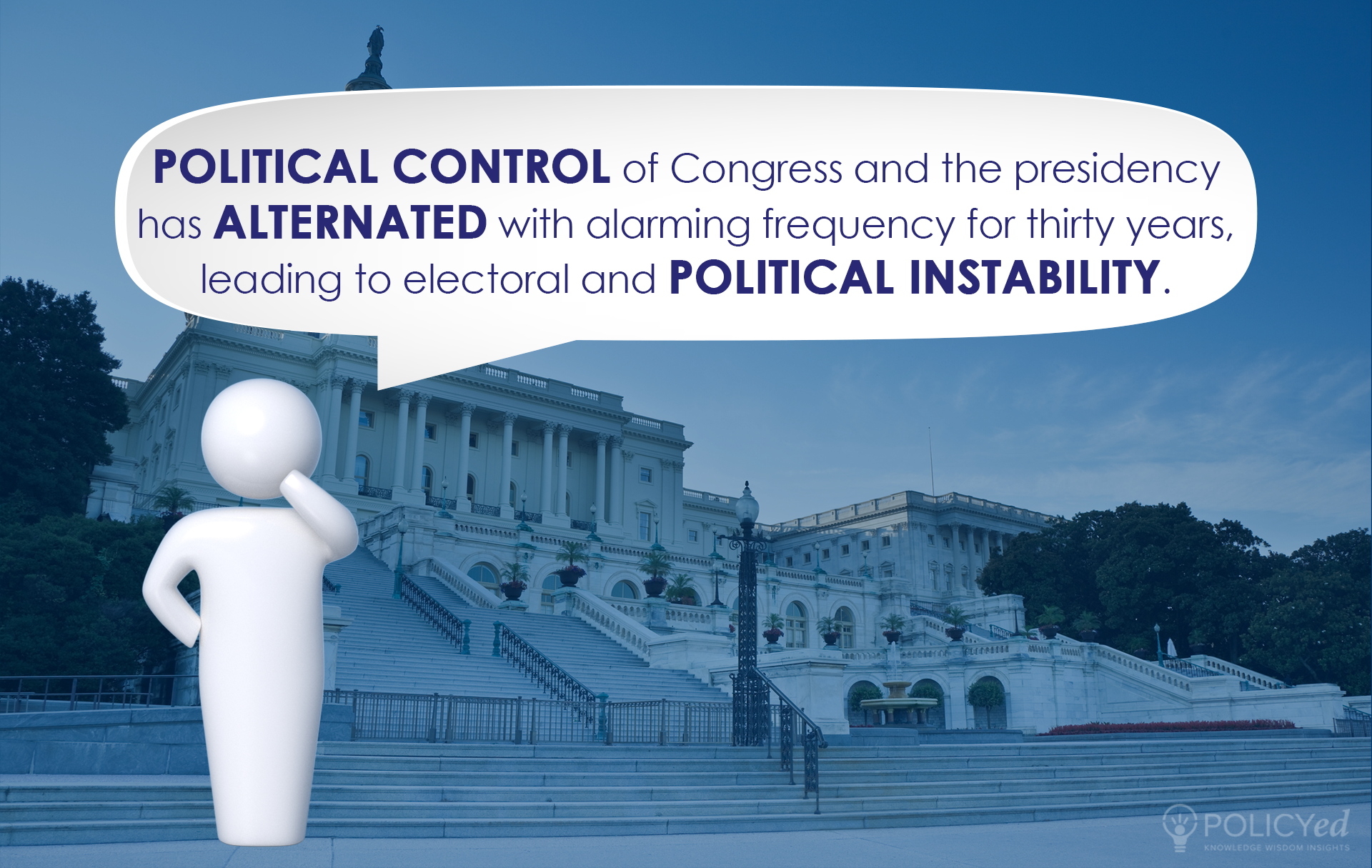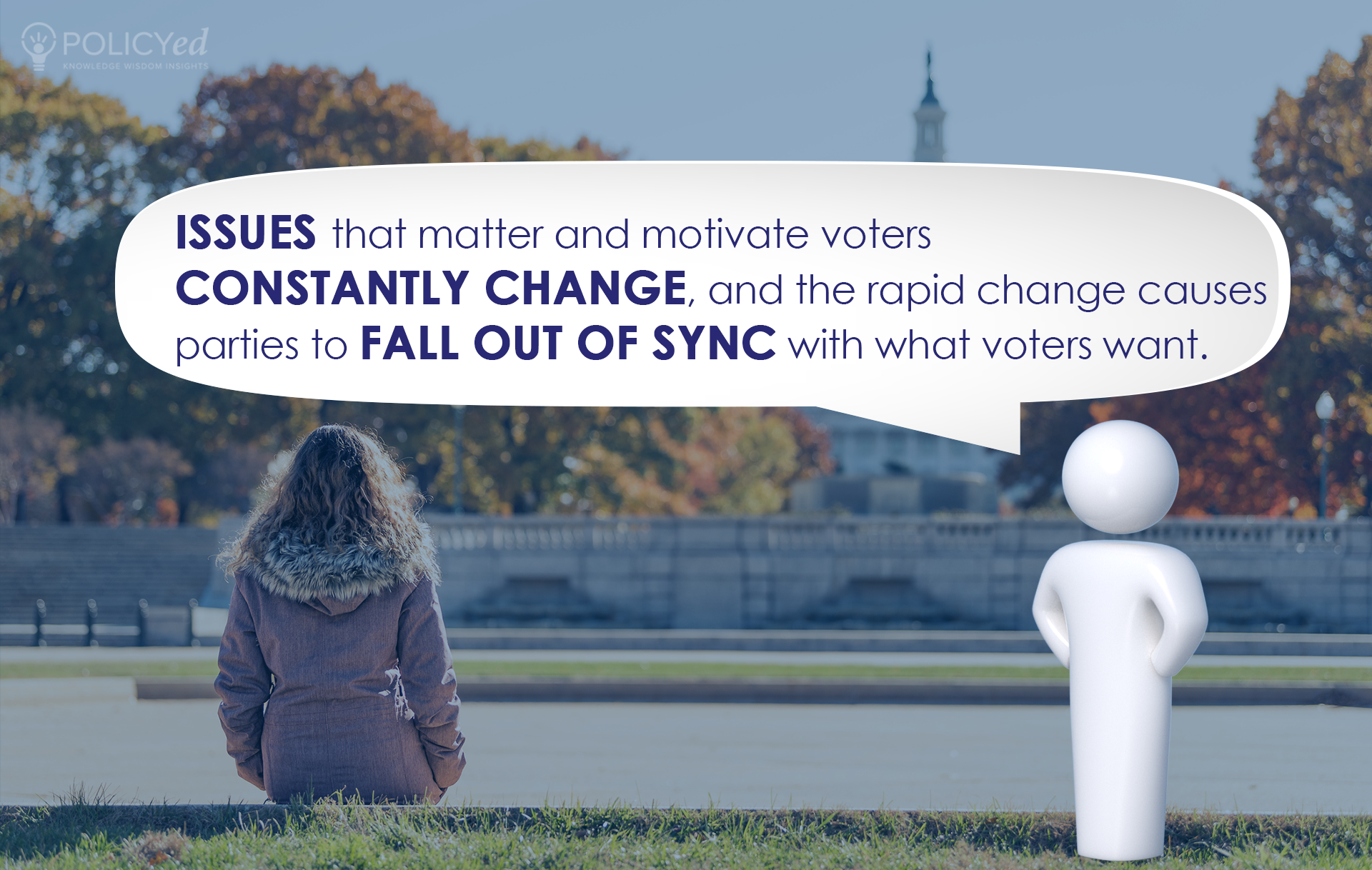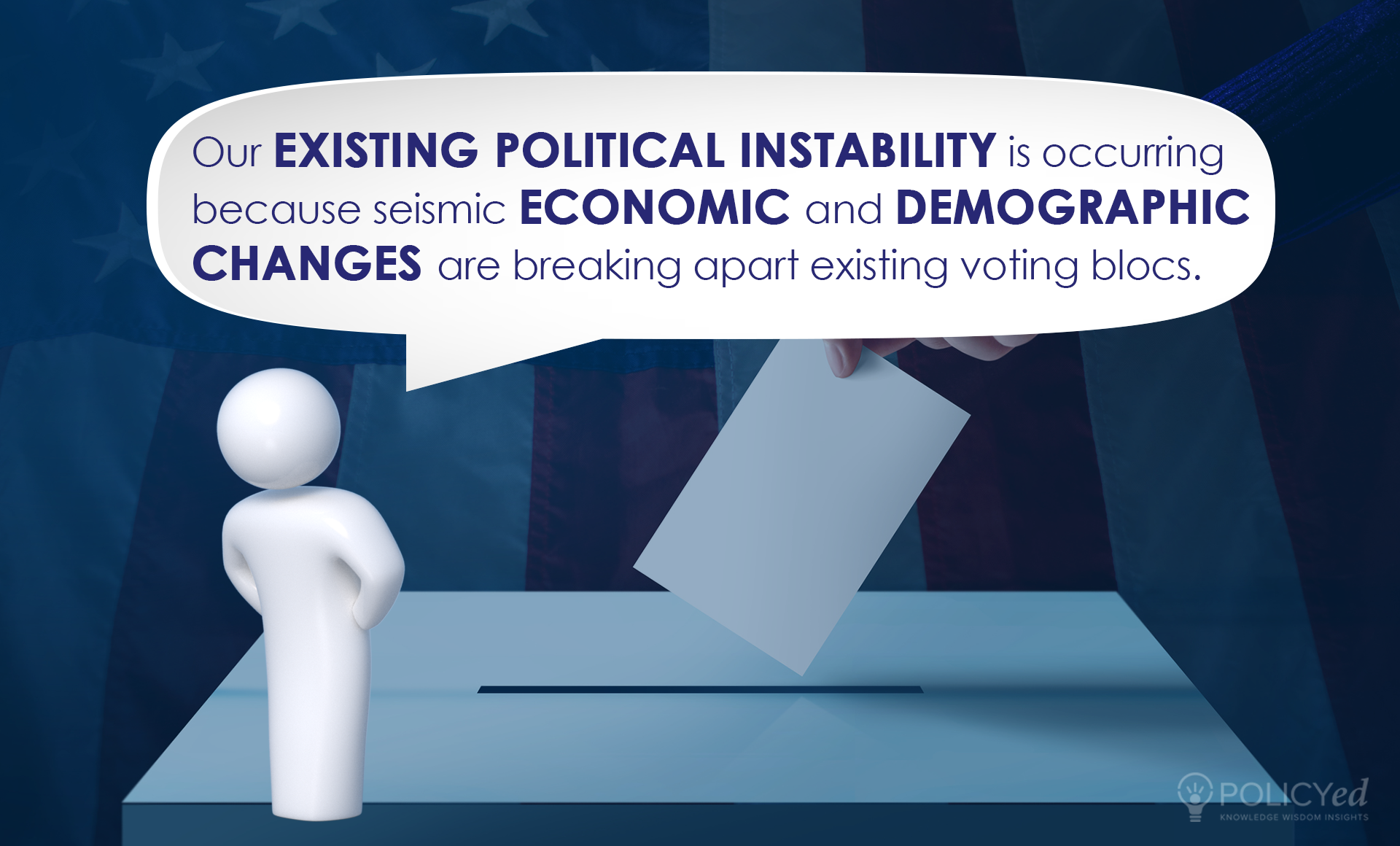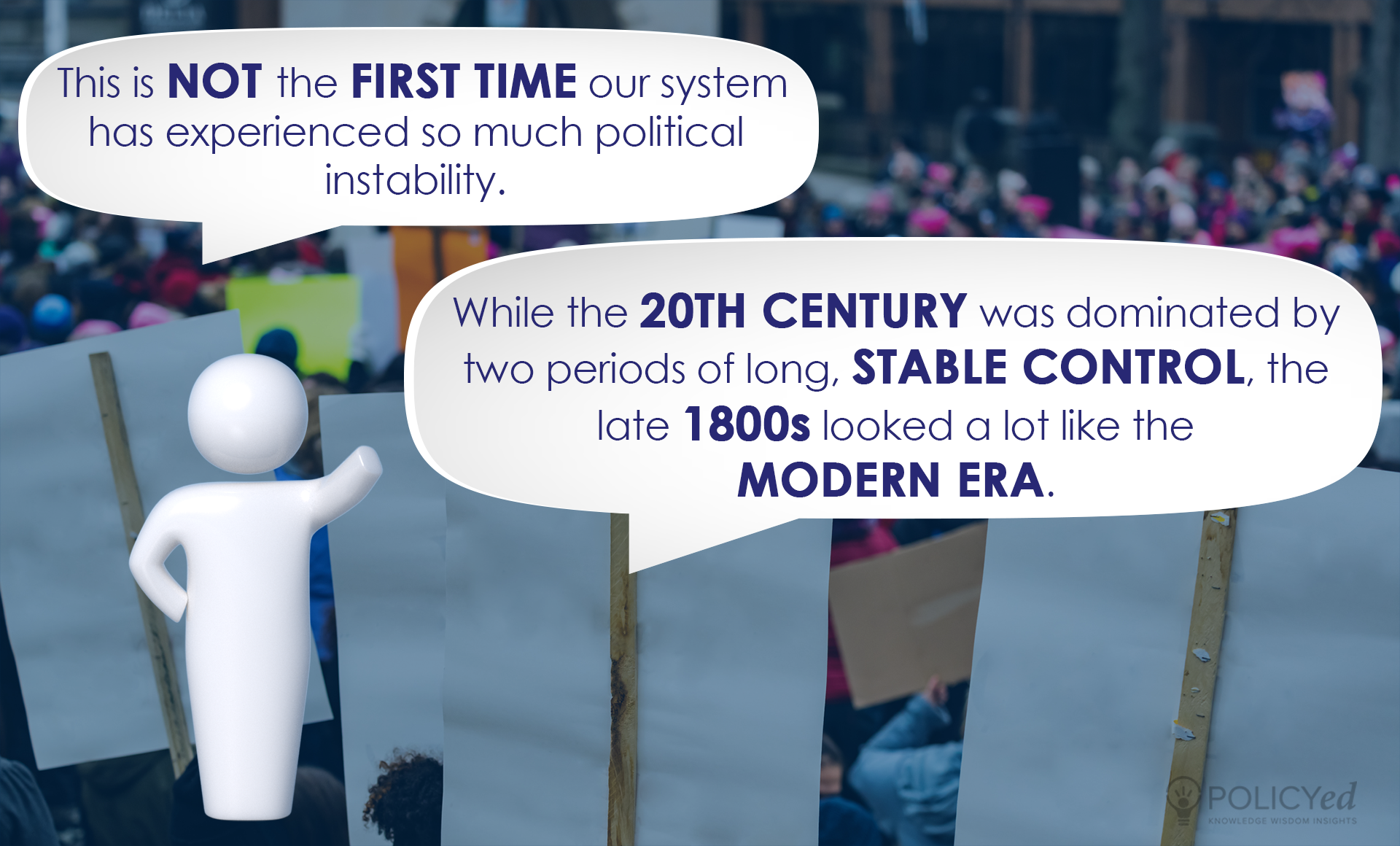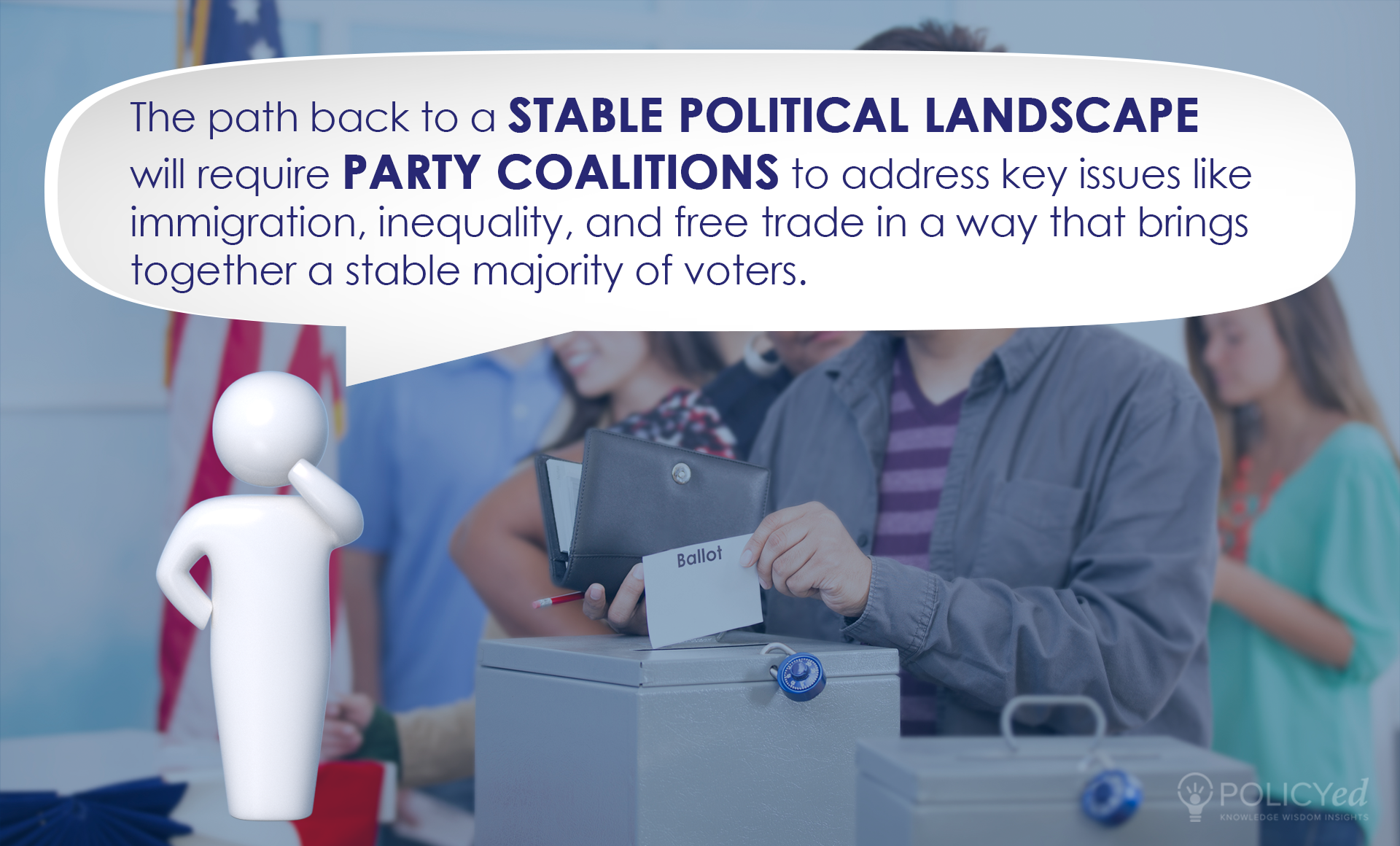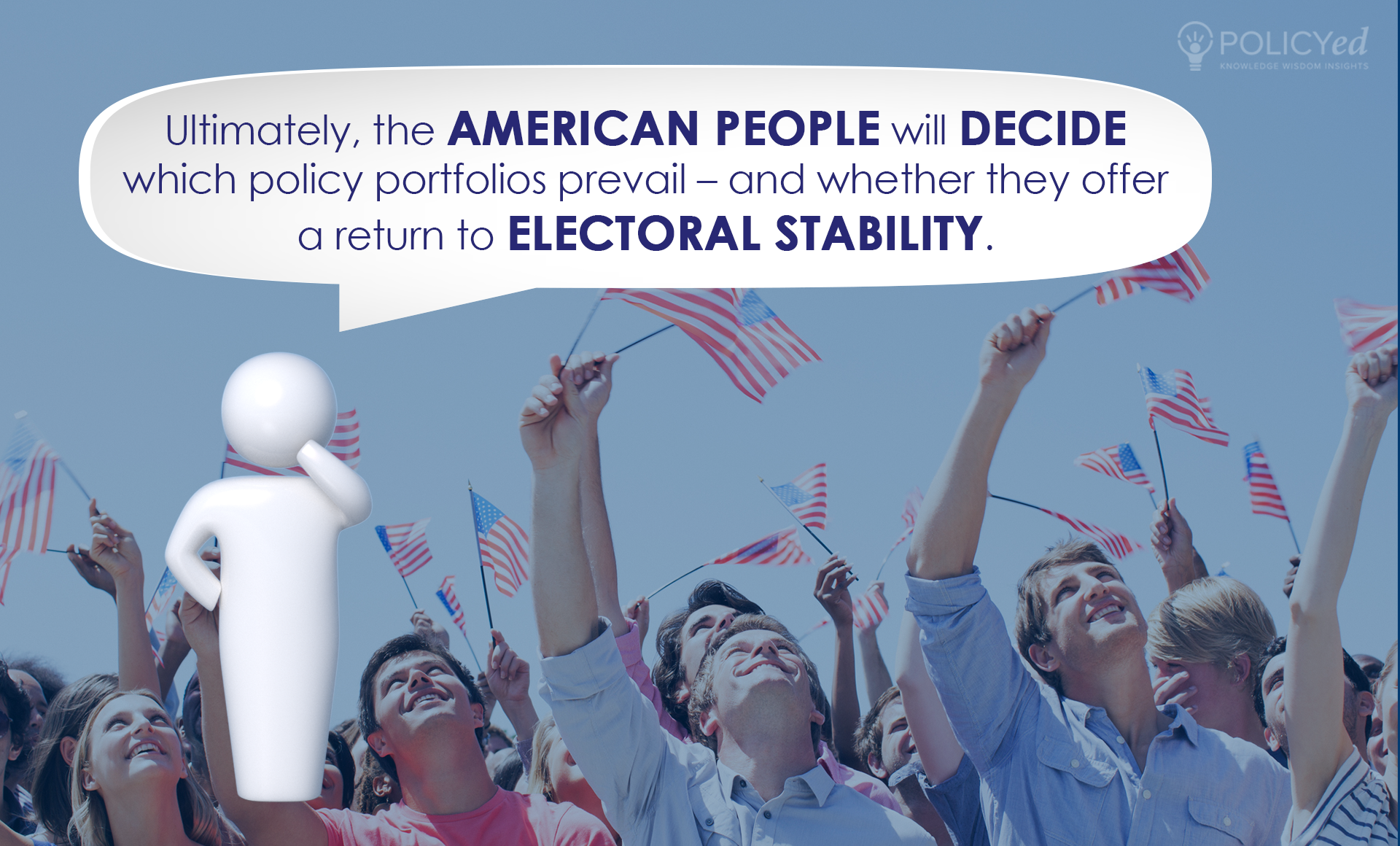Facts At Your Fingertips
Stable Political Landscape
The path back to a stable political landscape will require party coalitions to address key issues like immigration, inequality, family and social breakdown, worker insecurity, automation, trade, the U.S. role in the world, and environmental challenges in a way that brings together a stable majority of voters.

